Standard Playing Card Patterns
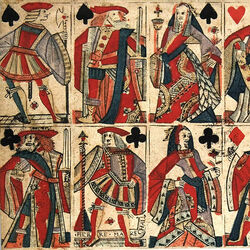
Standard patterns are when a certain design becomes established in a certain region and all local manufacturers produce a version of it. It then becomes traditional in that region or in other regions where it is adopted.
Some modern patterns are descendants of patterns used three of four hundred years ago. For example, the widely-used standard Anglo-American pattern seen today derives from sixteenth century French designs.
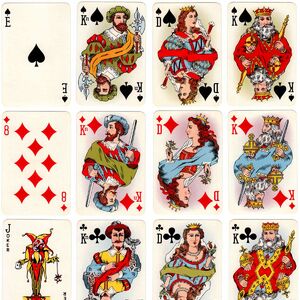
‘501’ playing cards by Alf Cooke
“Five 'o One” playing cards, a version of the Dondorf Rhineland pattern, manufactured by Universal Playing Card Co. Ltd for export to Scandinavia.
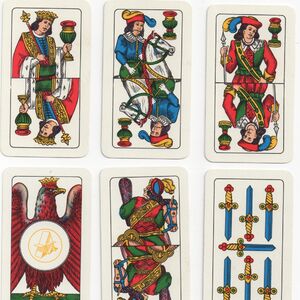
16: European Standard Playing Cards
A brief survey of the different types of standard cards to be found in Continental Europe.
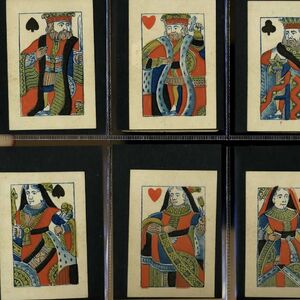
19: 19th Century Breaks With Tradition - Unusual Versions of the Standard English Pattern
The centuries-long tradition of English court cards was subject to misinterpretation and in some cases a desire for individuality. Here are some examples of breaks with that tradition.
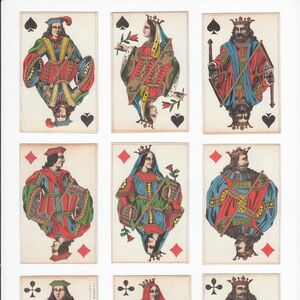
25: More Standard European Cards
A further selection of European standard patterns including various redrawings.
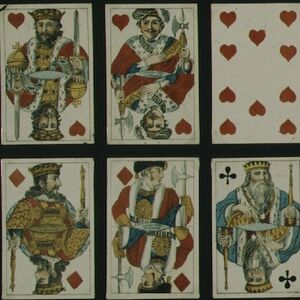
63: The descendants of the French regional patterns: 1
A great many regional patterns were exported from France and subsequently copied elsewhere. Some of them became local standards in their own right.
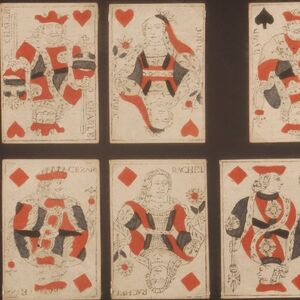
64: The descendants of the French regional patterns: 2
A continuation of the development of the off-spring of the Paris patterns and a few examples of how the French regional figures have inspired modern designers.
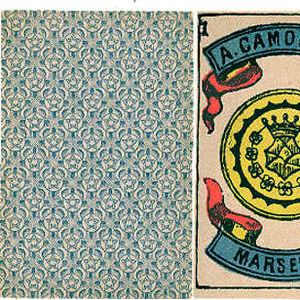
A. Camoin & Cie, Casablanca & Marseille
Spanish national pattern by A. Camoin & Cie, Casablanca & Marseille
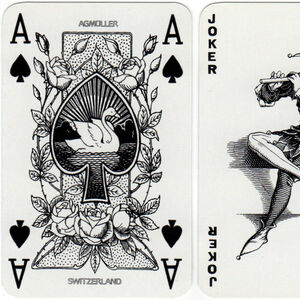
AGMüller English Pattern
AGMüller standard English pattern for the Royal Jordanian Airline, 1980s
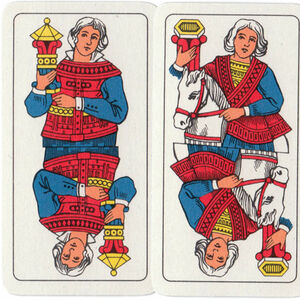
Bergamasche Pattern
Bergamasche Pattern by Modiano, 1970s.
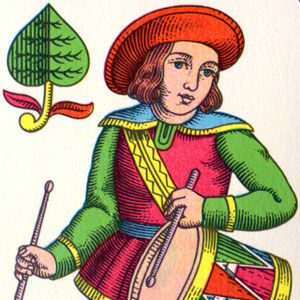
Bohemian Pattern
The Bohemian Pattern, sometimes called the Prager Pattern, has roots in the 16th century.
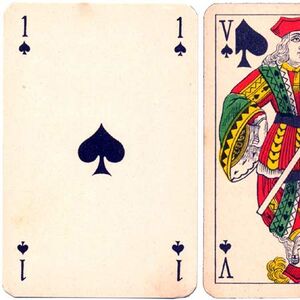
Brepols Genoese pattern
“Cartes Françaises” and Genoese pattern by Brepols.
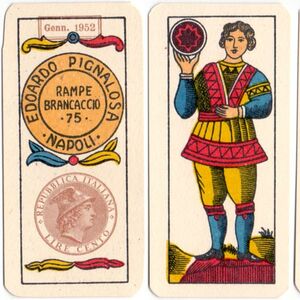
Brescia pattern
The Brescia pattern contains elements which come from a past age.
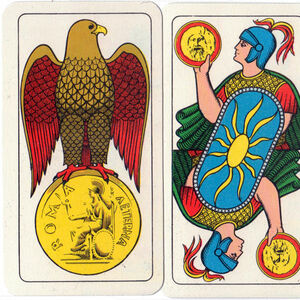
Carte Romane
“Carte Romane” designed by Giorgio Pessione, 1973, celebrating the history of Rome.
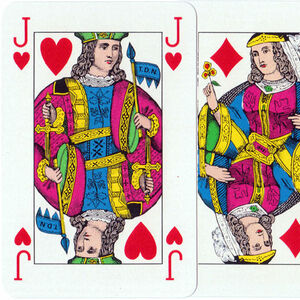
Dal Negro Bridge set
Dal Negro Bridge set featuring old Vienna pattern courts.
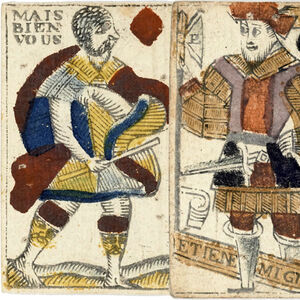
Dauphiné Pattern
The Dauphiné pattern is an archaic French pattern which was manufactured in the Lyons region from the 17th century.
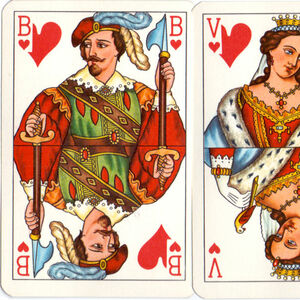
Dutch Pattern for Van Perlstein
Brepols Dutch Pattern for Van Perlstein distillery, c.1960.
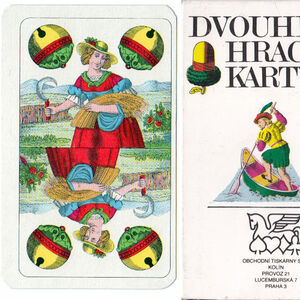
Dvouhlavé Hrací Karty
“Dvouhlavé Hrací Karty” (Czech Seasons playing cards) made by Obchodní Tiskárny, c.1980.
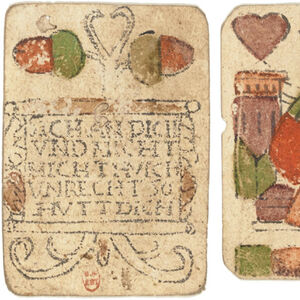
Early German playing cards
Some early examples of popular German playing cards from the XV and XVI centuries.
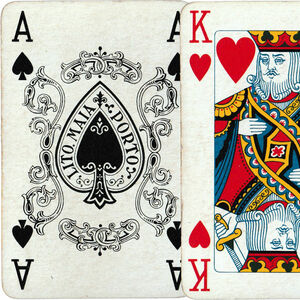
English pattern from Portugal
English pattern by Litografia Maia, Porto, Portugal, c.1960.
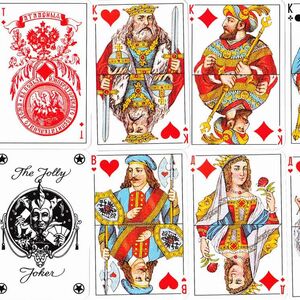
Epokha vozrozhdeniya (Age of Enlightenment)
Epokha vozrozhdeniya (Age of Enlightenment): this pack has effectively become the Russian standard.

